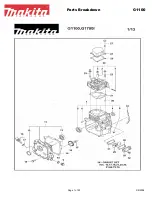
5.7. Synchronising the battery monitor
For a reliable readout, the state of charge, as displayed by the battery monitor, must self-synchronise regularly with the true state
of charge of the battery. This is to prevent drift of the “State of charge” value over time. A synchronisation will reset the state of
charge of the battery to 100%.
5.7.1. Automatic synchronisation
Synchronisation is an automatic process and will occur when the battery has been fully charged. The battery monitor will look at
a few parameters to ascertain that the battery has been fully charged. It will consider the battery to be fully charged when the
voltage has reached a certain value and the current has dropped below a certain value for a certain amount of time.
These parameters are called:
• Charged voltage - the float voltage of the battery charger.
• Tail current - a percentage of the battery capacity.
• Charged detection time - the time in minutes.
As soon as these 3 parameters have been met, the battery monitor will set the state of charge value to 100%, thus synchronising
the state of charge.
Example:
In the case of a 12V battery, the battery monitor will reset the battery’s state of charge to 100% when all these parameters have
been met:
• The voltage exceeds 13.2V,
• the charge current is less than 4.0% of the total battery capacity (e.g. 8A for a 200Ah battery) and,
• 3 minutes have passed while both the voltage and current conditions are met.
If the battery monitor does not perform a regular synchronisation, the state of charge value will start to drift over time. This is
due to the small inaccuracies of the battery monitor and because of the estimation of the
. Once a battery
has been fully charged, and the charger has gone to the float stage, the battery is full and the battery monitor will automatically
synchronise by setting the state of charge value to 100%.
5.7.2. Manual synchronisation
The battery monitor can be synchronised manually if required. This can be done by pressing the "Synchronise" button in the
VictronConnect app. Navigate to "settings" and then to "battery settings".
A manual synchronisation can be needed in situations when the battery monitor does not synchronise automatically. This is for
example needed during the first installation or after the voltage supply to the battery monitor has been interrupted.
A manual synchronisation can also be needed when the battery has not been fully charged, or if the battery monitor has not
detected that the battery has been fully charged because the charged voltage, current or time has been set incorrectly. In this
case, review the settings and make sure the battery regularly receives a full charge.
5.8. Operation as a DC meter
The battery monitor can be set up as a DC energy meter. It is used to measure DC production or consumption of a specific device
in a system, like for example an alternator, wind turbine or hydro generator. Or similarly, the consumption of a specific circuit or
load in a DC system.
When in DC monitor mode, the voltage, current and power is displayed.
Manual - SmartShunt IP65
Page 16
Operation
















































